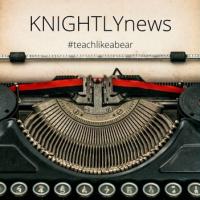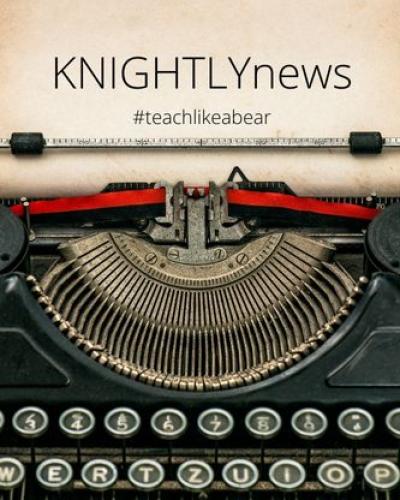I am often asked about a favorite activity from my bulging Teacher’s Toolkit. Here is a never-fail half-class activity that can be adapted for nearly any FWS.
Puzzling Essays is a dynamic, tactile, embodied activity that gives students opportunities to differently explore the primary question driving FWSs (how does writing work?) and zoom in on a particular aspect of that question (how can organization work?)
I typically nest this activity within a 4-week assignment sequence that slowly builds students up to apply these questions – how does writing work, and how, specifically, does organization work? – to their own writing (how can my structural choices best communicate my ideas to readers?), and prepare them to confidently offer feedback to others in peer review workshops (how can I speak clearly and confidently and productively about the way writing works in conversation with others so they can revise?).
Preparing for the activity is so very simple. I take two essays, print one paragraph per page, mix up the pages so as to both integrate the two essays and shuffle the paragraphs. I make enough copies for several groups. (I find groups of 3 is best most of the time.)
I use early drafts written by former students (yes, with their permission), but you could use short assigned readings from the course, or essays generated by an AI bot. (I tried this, and it is a pretty good solution!) You could also ask two of your current students if they would volunteer their essay drafts (though they would not be able to participate in the activity in quite the same way).
In their groups, students are prompted to read the collection of paragraphs, determine which paragraphs work together to form an essay (sorting them into two piles), and then figure out the order in which the paragraphs should be arranged.
It is not easy! I walk around the room, checking in, offering clues, and listening closely so that I can take notes on the board. Students are serious and focused, the room sprinkled with periodic bursts of laughter. I wind the activity down after 20 minutes or so, and most of the time, no group completes the task or completes it accurately. Sometimes. But not often.
Here are some of the things I might write on the board:
- General and specific — introductions/conclusions and body paragraphs do different things
- Topic sentences in body paragraphs connect to thesis and link paragraphs to one another
- Key terms and phrases repeat to create cohesion and coherence
- Signature moves express a writer’s style and voice
- Syntax
- Word choices
- Ways of introducing sources and presenting evidence
- Ways of moving between paragraphs (transition words vs explicit conceptual linking)
Students always impress me! I rarely need to prompt them to get a list like this one on the board. Importantly, the essays I use for this activity do not necessarily do all of these things well. Remember, I stated above that I prefer to use early drafts written by former FWS students. I put these items on the board because these were the things students talked about in their deliberations. These were the things that they were considering as they attempted to sort out and arrange the essays. They made confident decisions when these elements were consistent.
Before we leave the essay fragments behind, I share the essays as GoogleDocs and ask students to resume their group work to revise one of the essays for clarity, and we complete the day’s work by sharing and discussing those revisions.
The 5-activity lesson plan is included below.
Let me back up now to talk about some context and broader pedagogical strategies and foundations. Students are in the process of composing drafts (typically their second), and I do this activity to prepare them for the next class session when they will share their own drafts in peer response groups.
In the days leading up to the Puzzling Essays activity, we have read and discussed several assigned readings using my typical discussion model: what is this text about and how does it work? The what gives them the stuff to write about; the how, at this particular moment in the semester, involves structure. How have these authors arranged their writing? What are the guiding principles of their organizational design?
This activity, Puzzling Essays, enables us to zoom in to consider the ways writers create and develop flow between paragraphs. It also prepares us for next conversations about creating flow within paragraphs and at the sentence level, different types of thesis statements, and the ways quotations are incorporated and evidence and analysis are presented.
Let’s back up a bit more. In general, my classroom work moves between more organic ground-up learning and the presentation of writing tools from the field of writing studies. On one hand, students and I develop natural, colloquial ways to talk about the moves that writers make by sharing observations – the organic, ground-up learning – and I supplement their observations with writing apparatus – that stuff found in writing textbooks that assigns names and rules to the things writers do.
The result is that students develop a writing lexicon (one that is familiar to those outside of our classroom, though it is always inflected by the tone and vernacular of each particular classroom community). The ground–up work is important. It engages students, builds confidence and community, and thus can embed the learning deep within students’ “muscle memory” so they are more likely to take the learning beyond the classroom as they continue developing as writers who will necessarily move in and out of new academic, disciplinary, professional, and civic writing contexts.
But the top-down learning, the writing apparatus, the more widely-familiar LEXICON is important too insofar as it can enable students to continue learning and developing their writing WITH OTHERS. Access to the lexicon, that is, is access to future conversations about writing. This activity reinforces that learning, and as I am listening to their small group deliberations as they talk about why this paragraph belongs here or there, I am assessing their facility and agility and taking mental notes on knowledge peaks and valleys and what I can skip or move quickly through or what I should revisit in next classes.
Here’s a specific example of what I mean! When discussing an assigned reading, I direct students to a specific area of writerly concern – let’s do a backwards outline of this essay and talk about what we notice about how the essay is arranged. What does each paragraph do and why are they placed in this particular order? Let’s try to get into the writer’s mind…
After students make their always smart observations, I share with them two ways to understand organizational development: the hub & spoke and fishbone/accumulation methods and the point-by-point and block methods. Notably, I do not present these methods as models. I do not, in other words, say, “this is how you should do it” or “this one is better than that one” or even that “these models are found in pure form in good writing.” Rather, I note that these models rarely exist in real human writing in the pure forms that are presented on my handout (though they might be the structures that guide GAI outputs, hmm), but when construed as methods to drive process, they can provide opportunities for us to talk about the choices writers make: here, both the ways we signal conceptual moves, and the techniques we use to make those moves explicit for our readers.
So enough teacher talk! Here is the activity sequence: Puzzling Essays to Prepare FWS Students for Peer Review.
EXERCISES IN STYLE | Activity 1
Here are paper-clipped bundles of paper. I have taken two essays (two early drafts written by former FWS students), captured one paragraph from each essay on a single sheet of paper, and then mixed the pages up! Your job is to sort the two essays (which paragraphs go together) and assemble them (in what order do the paragraphs go).
Working with a partner/s (who have you NOT yet worked with?),
grab a bundle of paper and a peer/s, and clear off a table
read the provided collection of paragraphs
determine which paragraphs work together to form an essay (sort them into two piles)
figure out the order in which the paragraphs should be arranged
take notes on how you and your partners made decisions (I’ll be snooping, as always, and also taking notes on the board!)
EXERCISES IN STYLE | Activity 2
Let’s do some revising!
Follow the link on our class agenda to the two essays we just puzzled through. Working with your group mates,
consider your difficulties sorting and arranging the essays
revise for clarity
be prepared to share revisions and discuss rationales, strategies, and intentions
EXERCISES IN STYLE | Activity 3
For homework,
Import these ideas into your own writing process
Revise your draft accordingly
Be prepared to give and receive feedback in our next class!
EXERCISES IN STYLE | Activity 4
Exchange drafts with a group of thoughtful and smart peers!
Goals
Get to know your peers by reading their writing
Learn more about writing by reading other peoples' writing
Share ideas for organizing your draft and building your thesis
Guidelines
Writers | Talk about your draft:
What is your topic?
What is your argument?
What is your organizational plan, and why is it designed this way?
What is your favorite thing about this draft?
Readers | Talk about what you see:
Describe the structure. If helpful (though not necessary), consider where you see hub & spoke or fishbone elements, and/or where you see block or point-by point methods at work.
Point to a moment in the text where the writer makes the strongest transition between paragraphs and talk about why you find this moment so successful.
What is your favorite thing about this draft?
EXERCISES IN STYLE | Activity 5
Before class ends today, take a few minutes to post a Reflection to our shared Google Agenda.
REFLECTION QUESTIONS
When you finish commenting on each others' drafts, jot down a few sentences in the table below:
After reading your peers' drafts, what
ONE thing did you learn about the topic?
ONE thing did you learn about writing?
ONE thing do you want to try out or do differently either in the next draft of this essay OR in a future assignment?
The KNIGHTLYnews is an online forum where FWS instructors and other teachers of writing can swap and share ideas for best classroom practice. Weekly posts are designed to help teachers develop lesson plans and writing assignments, and respond to classroom challenges by introducing new teaching tools and sharing emerging pedagogical ideas. Posts also direct readers to program and campus resources that support teaching and learning, and provide opportunities for peer collaboration and mentorship.



